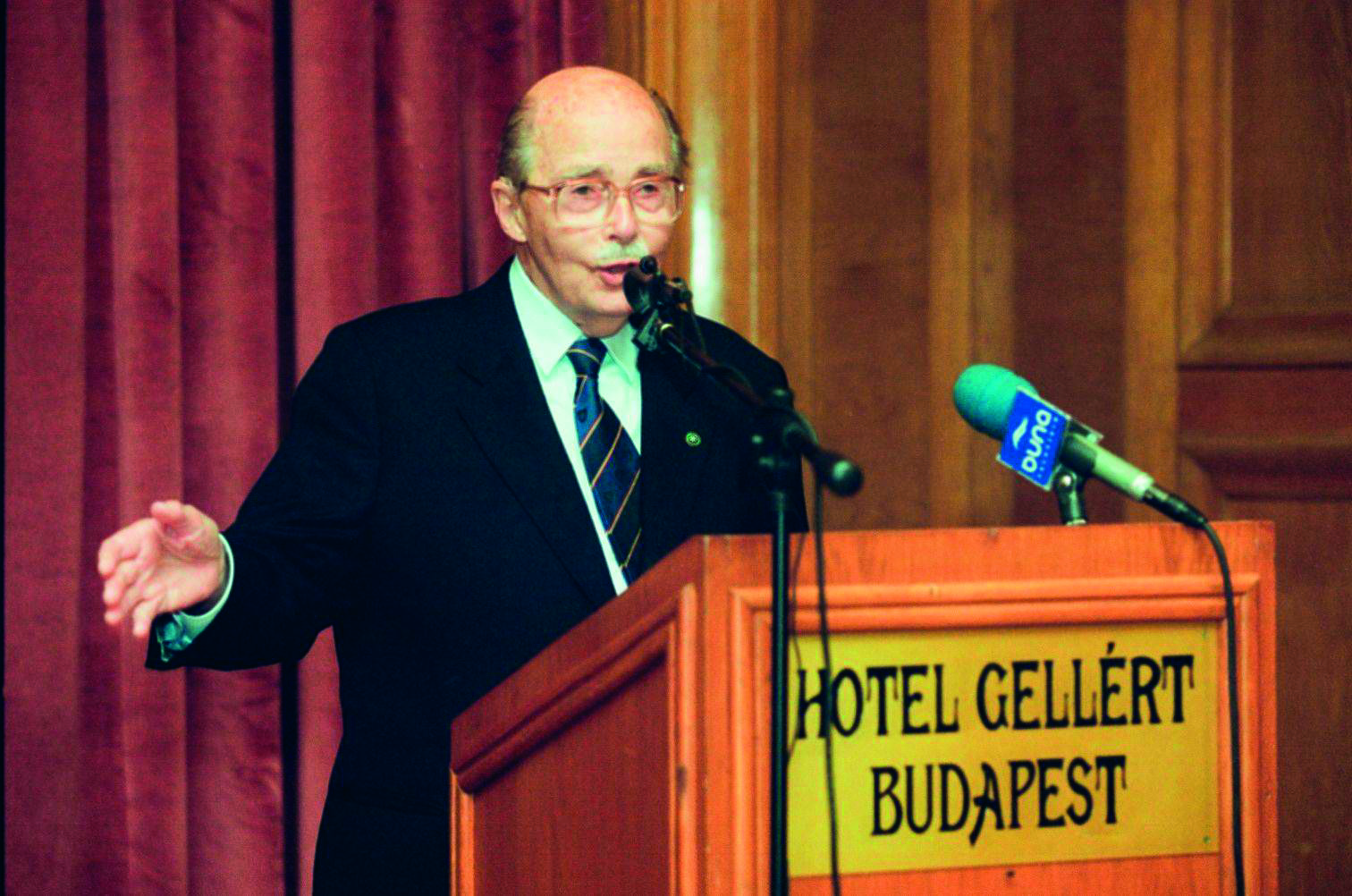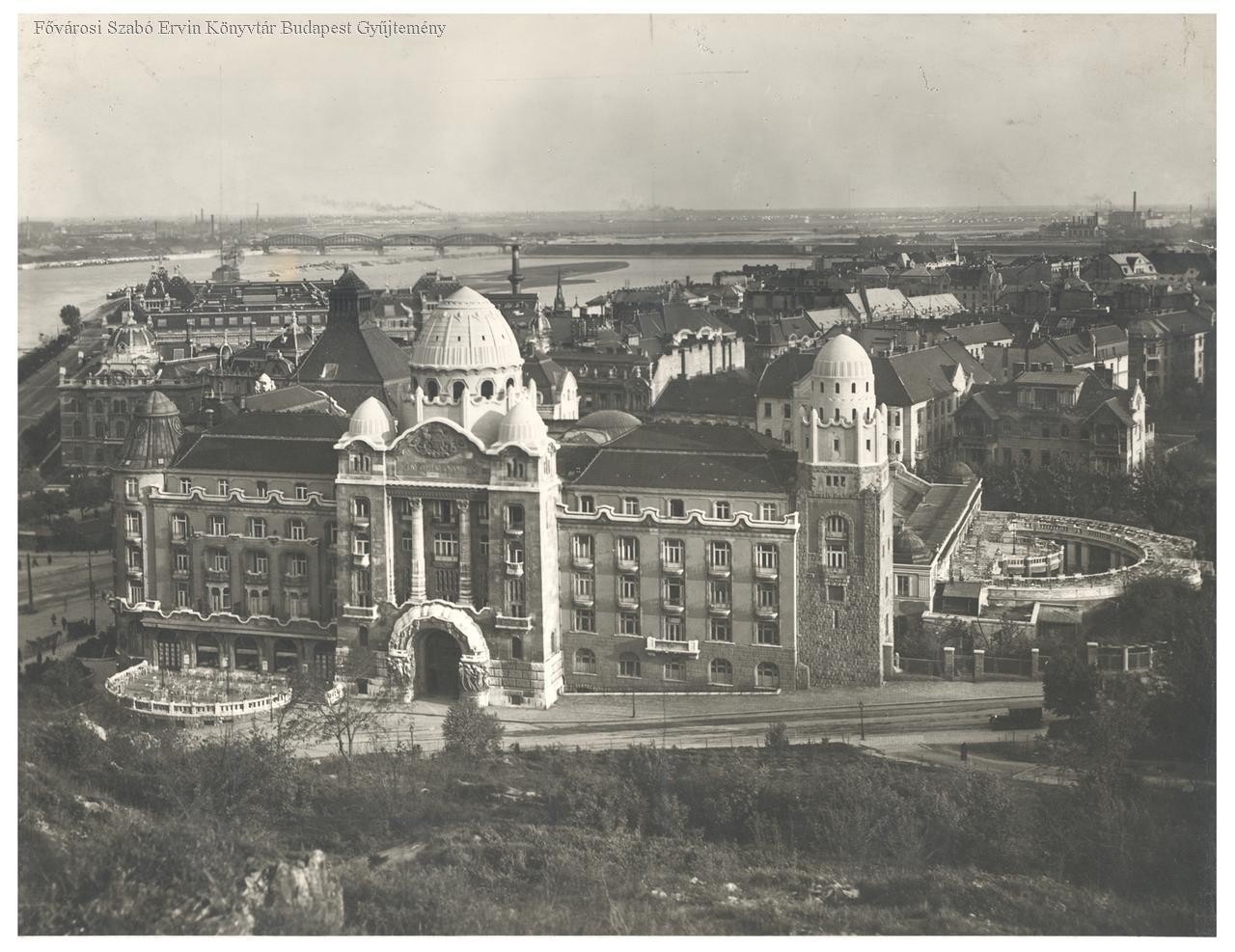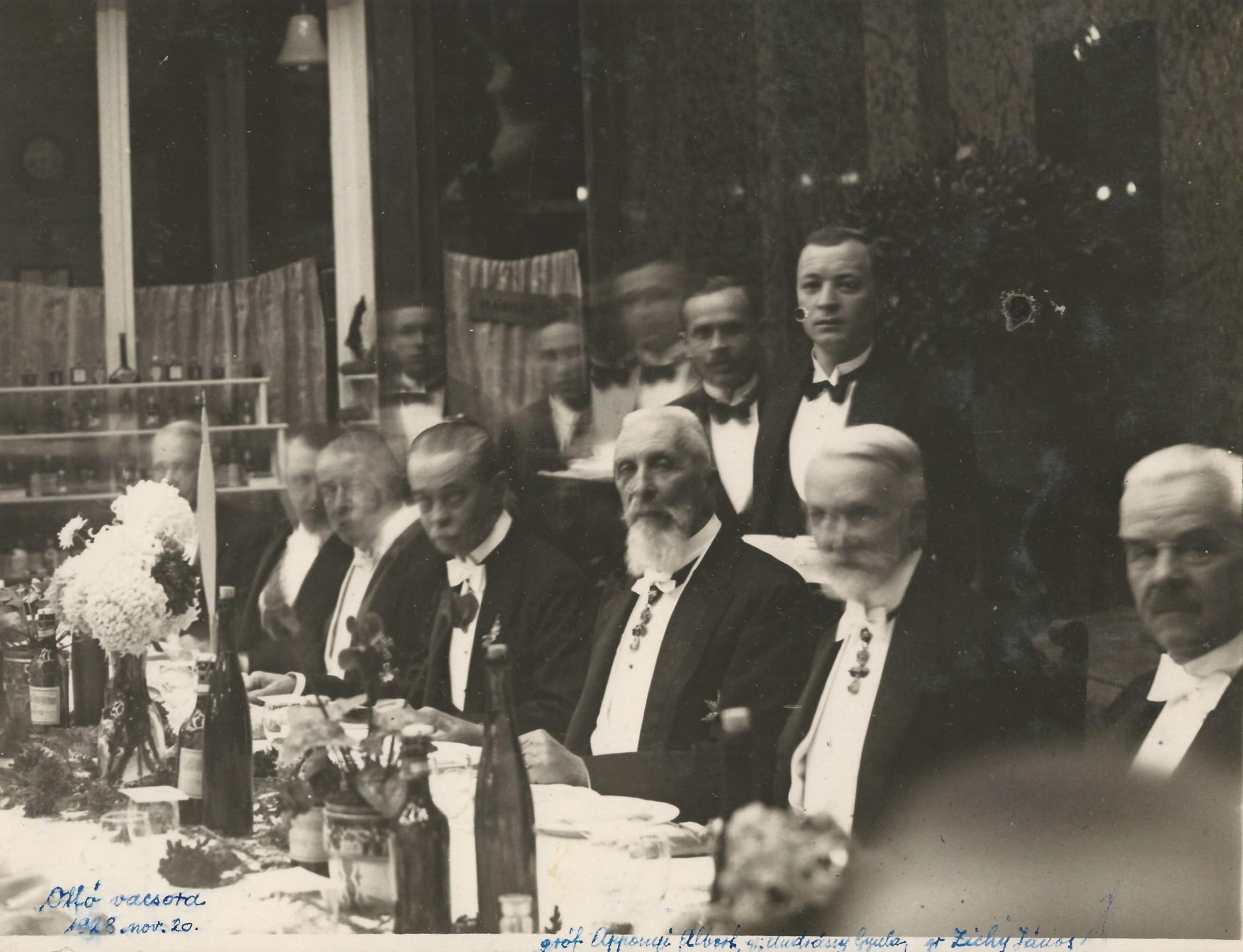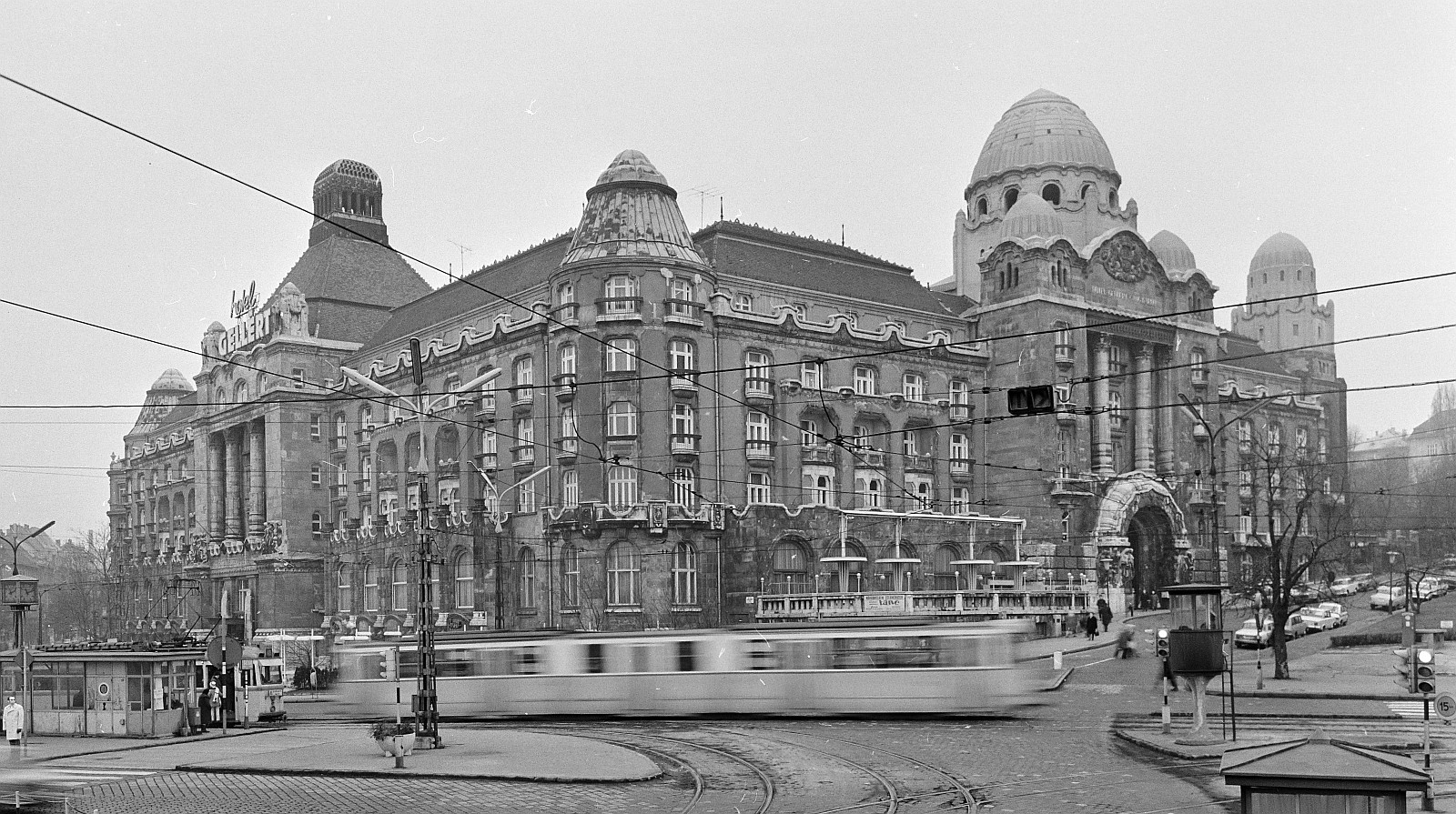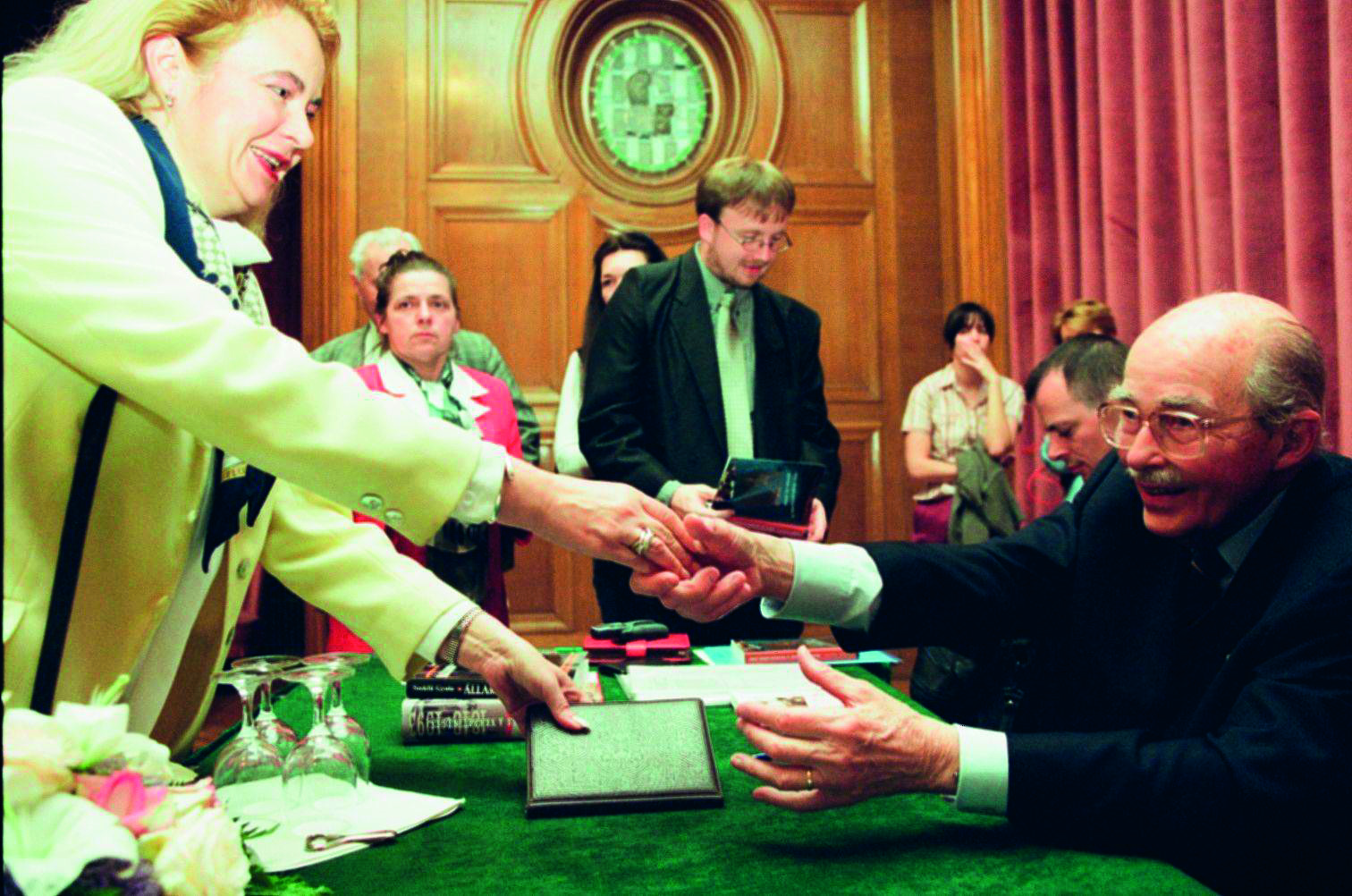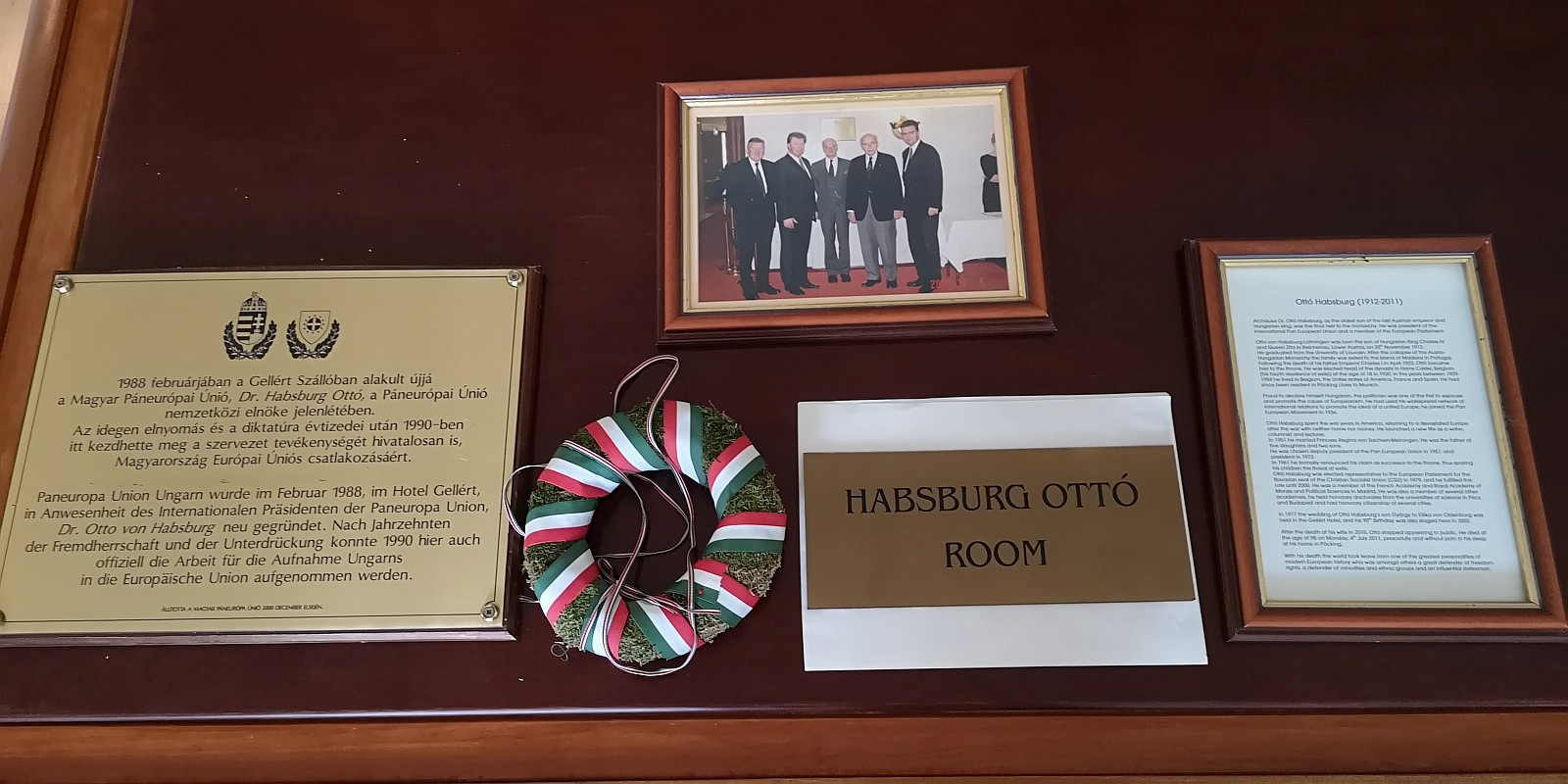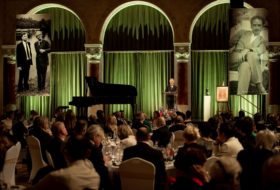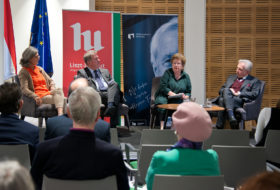The Hotel
Named after Saint Gellért, the secession-style Hotel Gellért and Thermal Baths opened its doors in 1918. However, the 176-room hotel and spa were closed to the civilian public and used for military purposes during the Soviet Republic era. It was not until the late 1920s that the hotel’s prospects changed for the better when more rooms were added. In the following decade, the Hotel Gellért made the list of the best hotels in the world, thanks to the famous restaurant of Károly Gundel, the new effervescent bath and the wave-pool.
In January 1945, the bombings damaged the building so severely that it took more than a year for the hotel to be able to welcome guests with a mere fifty rooms. Afterwards, despite the expropriation, the Gellért continued to develop: by 1972, it had undergone a complete renovation and modernisation to meet the needs of the time, bringing the number of rooms to over 230, and with additional suites, the now world-renowned spa was awaiting the guests.
Over time, the hotel’s elegant interior and its restaurant have become increasingly important in the social scene. Conferences, dinners and weddings were held at the Gellért, and many celebrities stayed here, including renowned artists, scientists and politicians such as Kirk Douglas, Weiner Heisenberg, Björn Borg, Richard Nixon, Eddie Murphy and Otto von Habsburg.[1]
The guest
Otto von Habsburg’s name was associated with the Hotel Gellért as early as the mid-1920s. After the death of Charles IV (1922), the Legitimist groups celebrated a mass in honour of the then infant Otto on his birthday, the 20th of November, followed by a public banquet between 1924 and 1939. Until 1933, the dinners were held under the presidency of Count Albert Apponyi, in the presence of prominent politicians, at the Hotel Hungária, the Pesti or the Budai Vigadó, and on several occasions at the Hotel Gellért. The latter was considered particularly suitable for the prestigious event for its modern design and spacious halls.
The venue hosted the first Otto dinner in 1926, with 270 guests attending. Two years later, over 300 people gathered to celebrate the heir to the throne. The daily newspaper Újság published a detailed account of the event, describing the guests, the dinner and quoting from Count Albert Apponyi’s speech.[2] Every year on these occasions, a picture of Otto von Habsburg was placed on a banquet table, and a letter of honour was sent to him (and his family) signed by the guests. From 1930 the venue changed, and after that – except for 1936, when they returned to the Gellért – dinners were held mainly in the Pesti Vigadó. The event of 1931 is worth mentioning, where Tibor Kállay made a speech in which he said that the return of a legitimate monarch would be the best thing for the country; however, Otto von Habsburg does not intend to lead the nation by a coup d’état.[3]
As history would unfold, Otto had to wait decades for his return. When the first official visit finally took place in 1988, he arrived in Budapest no longer as heir to the throne but as a politician of European renown. Recalling the occasion in an interview given to Esti Hírlap, he said: “…I had already decided on my first trip, in eighty-eight, that I would not stay in a foreign hotel. Since only the Hotel Gellért was under real Hungarian management at the time, I came here. I was never disappointed in the place and became a regular guest.”[4]
Indeed, it was here that he stayed on his first trip, and where he took part in the re-establishment of the Hungarian Pan-European Union. Afterwards, whenever he visited Budapest, Otto von Habsburg chose to stay at the Hotel Gellért. Each time, he stayed in room 238 on the second floor, on the side of the building overlooking Kelenhegyi út and the indoor swimming pool.[5] Mihály Vásony, who has worked at Gellért for more than 57 years and was the hotel’s guest relations manager at the time, said that he was always told in advance when Otto von Habsburg arrived, and he would escort the guest up to his room. He specifically noted that the Archduke was very cordial with everyone, and on a couple of occasions, he had lunch in the brasserie. Moreover, the bachelorette party and post-wedding reception of his daughter Walburga,[6] and after the wedding of his son George, the mayors who wished to congratulate him were also received here.[7] The latter couple stayed on for a longer period in Gellért until their own home was ready.[8] According to an anecdote, when a chauffeur once asked the Archcuke which hotel he could take him to, he replied indignantly that he would stay at the Gellért, as the Habsburgs always stayed at Hotel Gellért.
Many newspapers reported that Otto von Habsburg gave interviews at the Gellért and attended numerous events at the hotel. In addition, several Hungarian documents in our Foundation’s collection prove that letters or parcels were sent to the hotel. There were occasions when an audience was requested by a short note on the headed paper of Hotel Gellért with the Archduke while he was staying there.[9] Mihály Vásony confirmed that these letters and gifts were always kept aside for Otto and were given to him on his arrival. The records from the administration show that sometimes the most important documents were collected and forwarded to the Hungarian Secretariat.
As part of the chronicle of the close relationship between Otto von Habsburg and the Gellért, the former director of the hotel, Dr András Rubovszky, gave the Archduke a signed copy of his book Hotel Gellért, published in 1988. This volume, a copy of the letter of gratitude for the received gift,[10] and a letter of appreciation to the former director of the hotel, András Szelényi, enrich our collection.[11]
The Gellért as a memorial site
Throughout its history, it has become a tradition at theHotel Gellért to name some of its suites (eight in total) after famous, returning guests. That is how Yehudi Menuhin, Richard Nixon, Antal Páger, Maximilian Schell, Ida Turay, Andrew-Lloyd Webber and Vilmos Zsigmond became namesakes. Room 238, where he stayed during his visits, was named after Otto von Habsburg.[12] With the approval of the celebrities, the rooms were inaugurated with a ceremonial plaque, and a biography of them was placed in the suites. Otto, despite being a frequent guest at the hotel, was unable to attend this event due to his busy schedule. (He was not the only one – Oscar-winning cinematographer Vilmos Zsigmond was the only one who could attend the inauguration of his own room.[13])
Later on, another plaque related to Otto von Habsburg was placed on the wall of the hotel. In December 2000, the members of the Hungarian Pan-European Union celebrated the tenth anniversary of their formation and the start of their activities.[14] Though Otto von Habsburg was unable to attend, he sent his greetings to the participants through his son Georg von Habsburg. In his Hungarian correspondence, there is a brief report on the anniversary event by Zoltán Wodianer-Nemessuri, the organisation’s president in Budapest. We know from this that nearly 300 people attended the ceremony, including Ferenc Mádl, who was awarded the first Pan-European Cross of Merit. After the unveiling of the sign, a dinner and a gala was held at the hotel.[15] During his stay in Hungary in 2002, the Archduke visited the plaque with his son, and later a framed photograph of this occasion was placed next to the memorial plate.
Táblaavatás
The letter of report from Zoltán Wodianer-Nemessuri to Otto von Habsburg, written in Hungarian
These memories adorned the walls of the Hotel Gellért and Spa – until 2021, when the hotel reached another milestone in its history: the building closed its doors for renovation and modernisation. When the works began, the staff of the Otto von Habsburg Foundation approached the management and, to further enrich the legacy of our namesake, took the objects related to the Archduke into the care of our collection: the room’s nameplate, the displayed biography, the jubilee plaque and the photograph.
Since then, our collection of material related to the Hotel Gellért has been further enriched by a donation of slides, including photographs taken during a visit to the Hotel Gellért in March 1995 by Otto von Habsburg. We are grateful for the generous gift and hope to expand this part of our collection in the future – given that the many sources and the material evidence suggest that Otto von Habsburg was indeed a distinguished guest of the Hotel Gellért.
Beáta Vitos-Merza
[1] András Rubovszky: Hotel Gellért. Budapest, Artunion/Széchenyi Könyvkiadó, 1988, 16–50.
[2] Újság, 21 November 1928, 1–2.
[3] Pesti Napló, 21 November 1931, 4.
[4] Esti Hírlap, 7 May 1996, 6.
[5] Noémi Saly: Gellért 100. Budapest, Hungarian Trade and Hospitality Museum, 2018, 143. (Hereafter: Saly)
[6] Telephone conversation with Mihály Vásony – HOAL, 09.02.2022; further recollections can be found in Saly, 162-167.
[7] Népszabadság, 20 October 1997, 27.
[8] Szabad Föld, 14 September 2012, 13.
[9] HOAL I-2-c-Pulvari Károlyné
[10] HOAL I-2-c-Rubovszky András (Pöcking, 12.01.1989)
[11] HOAL I-2-c-Szelényi András (Pöcking, 30.08.1991)
[12] Saly, 170.
[13] Magyar Nemzet, 6 July 2015, 17.
[14] Komárom-Esztergom Megyei 24 óra, 4 December 2000, 1.
[15] HOAL I-2-c-Wodianer-Nemessuri Zoltán (Budapest, 27.01.2000)
